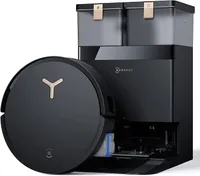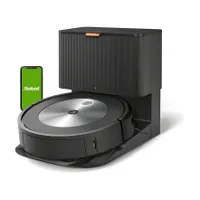We’ve tested dozens of robot vacuums for pet hair, and these are the 5 I recommend

Even the tiniest pet can produce mountains of hair around your home. Seriously, if you collected it all, you could probably make a second pet to keep your furry friend company. Which is why owning one of the best robot vacuums for pet hair can be the ultimate game-changer.
But in a market full of different robot vacuums, it can be a challenge knowing which one is best for your home, needs and budget. Do you need a robot vacuum to stay on top of everyday cleaning, or do you need a hybrid robot vacuum and mop that can tackle paw prints and other messes?
Our winning pick was the Roomba Plus 505 Combo that thoroughly picked up hair from our tester's Pug with spotless results. Or if you were after an affordable robot vacuum that excels on hard floors, we were impressed by the solid performance of the Narwal Freo Pro, which easily cleaned up after two short-haired dogs.
So if you want to find the right robot vacuum for you and your fur babies, here are the best robot vacuums for pet hair that made the final cut.
My top picks

One of the newest Roombas of the range, the Plus 505 Combo is an impressive all-rounder. Not only does it excel in pet hair pick-up and grime, but its 70x-more, powered mop scrubs pet messes in no time. It also comes with AI-powered features, a great app and can go up to 75 days of auto-emptying.

If you want top performance at a budget price, the Tapo RV30 Max Plus offers excellent value. Great for both hardwood and carpets, it can handle your daily clean-ups, picks up smaller debris and navigates with ease. It also has a great app and smart home features, which makes this a bargain buy.
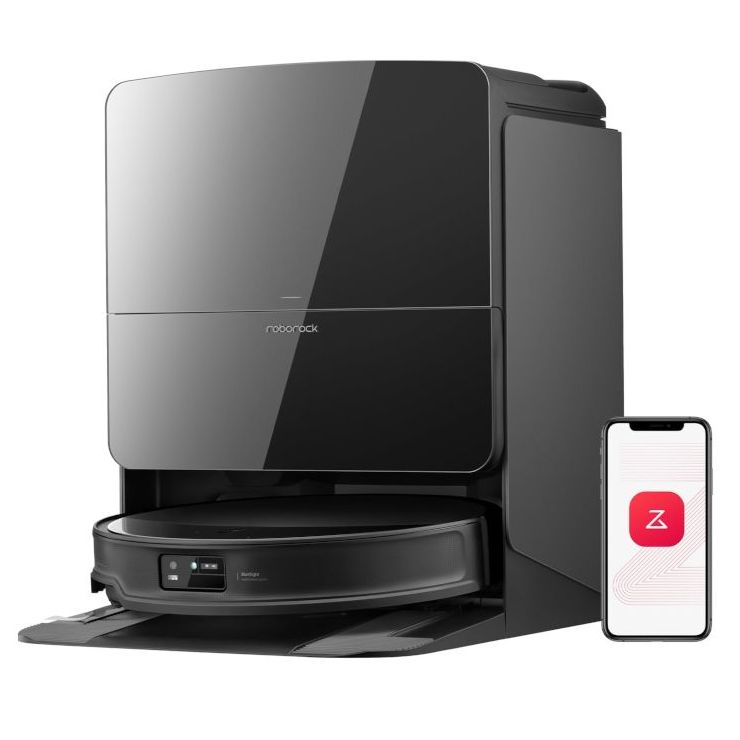
If you're after an excellent hybrid vacuum and mop, the Roborock Saros 10 R does a great job. Its powerful suction exceeded our expectations, particularly for pet hair pick-up across hard floors and rugs. It also comes with handy features, including a FlexiArm Riser Side Brush to sweep rogue furballs.
Meet our testers

As the Homes Content Editor for Tom's Guide, I have made it my mission for us all to have cleaner homes (and air!), without the fuss. I have a wealth of experience testing various appliances, and cleaning hacks. From finding the best vacuums and robot vacs, to wet and dry mops, I probably have one of the most spotless homes around.

Currently a freelancer at Tom's Guide, I've been an Editor at various home magazines for 7 years — reviewing and writing about everything from cleaning products to air fryers and mattresses. Now, I spend my time putting the latest tech and robot vacuums to the test, cleaning up after a shedding Pug (and a messy toddler!).

With over a decade of experience writing and editing on various topics, including home improvement, personal finance, and pet ownership, I know the perils of cleaning pet hair. My work has been featured on BobVila.com, TIME Stamped, and more. In my spare time, you'll find me running, spending time with my kids and two dogs, and testing the latest smart gadgets.
The best robot vacuums for pet hair you can buy
Why you can trust Tom's Guide
Best vacuum cleaner for pet hair overall
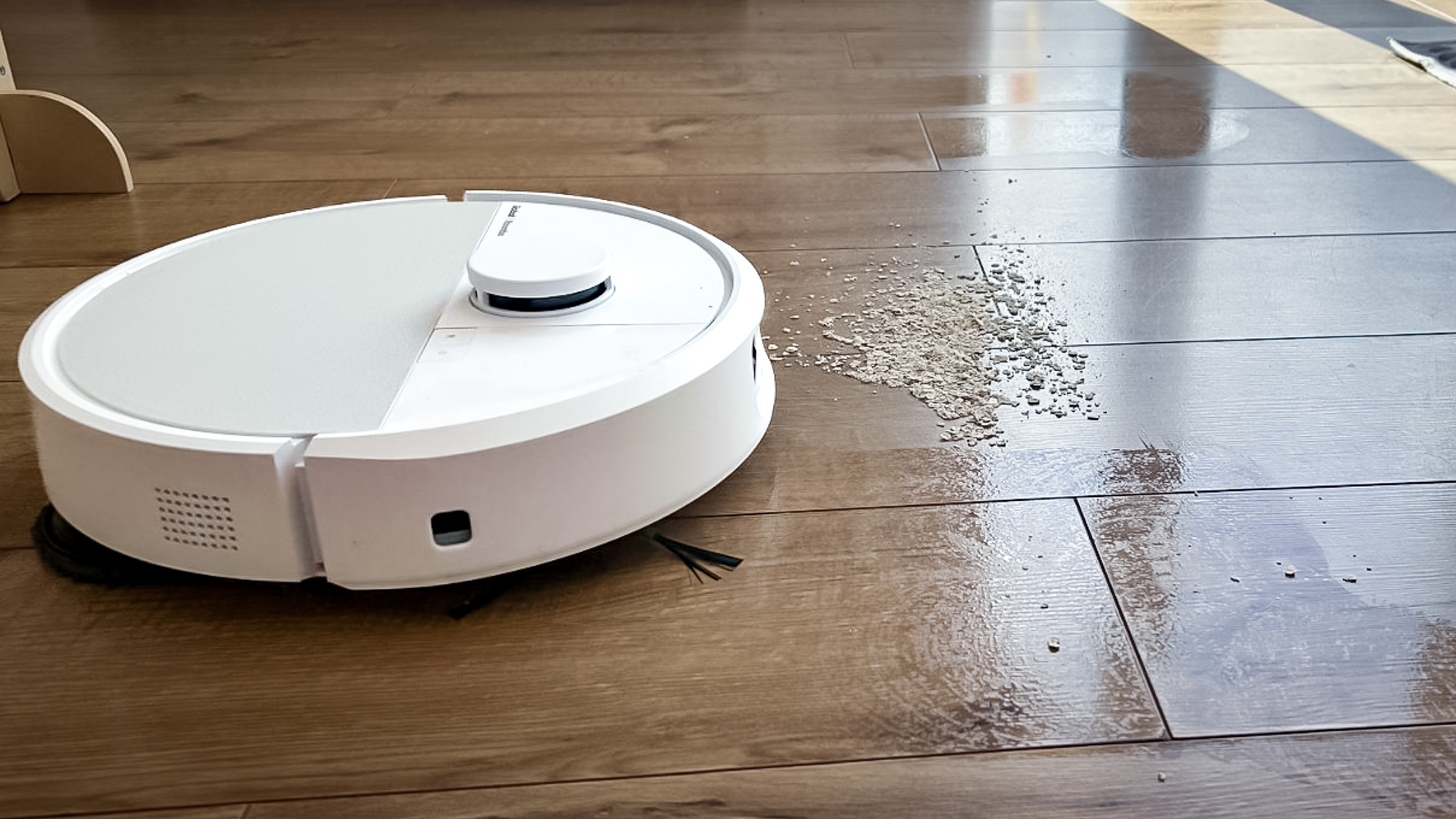

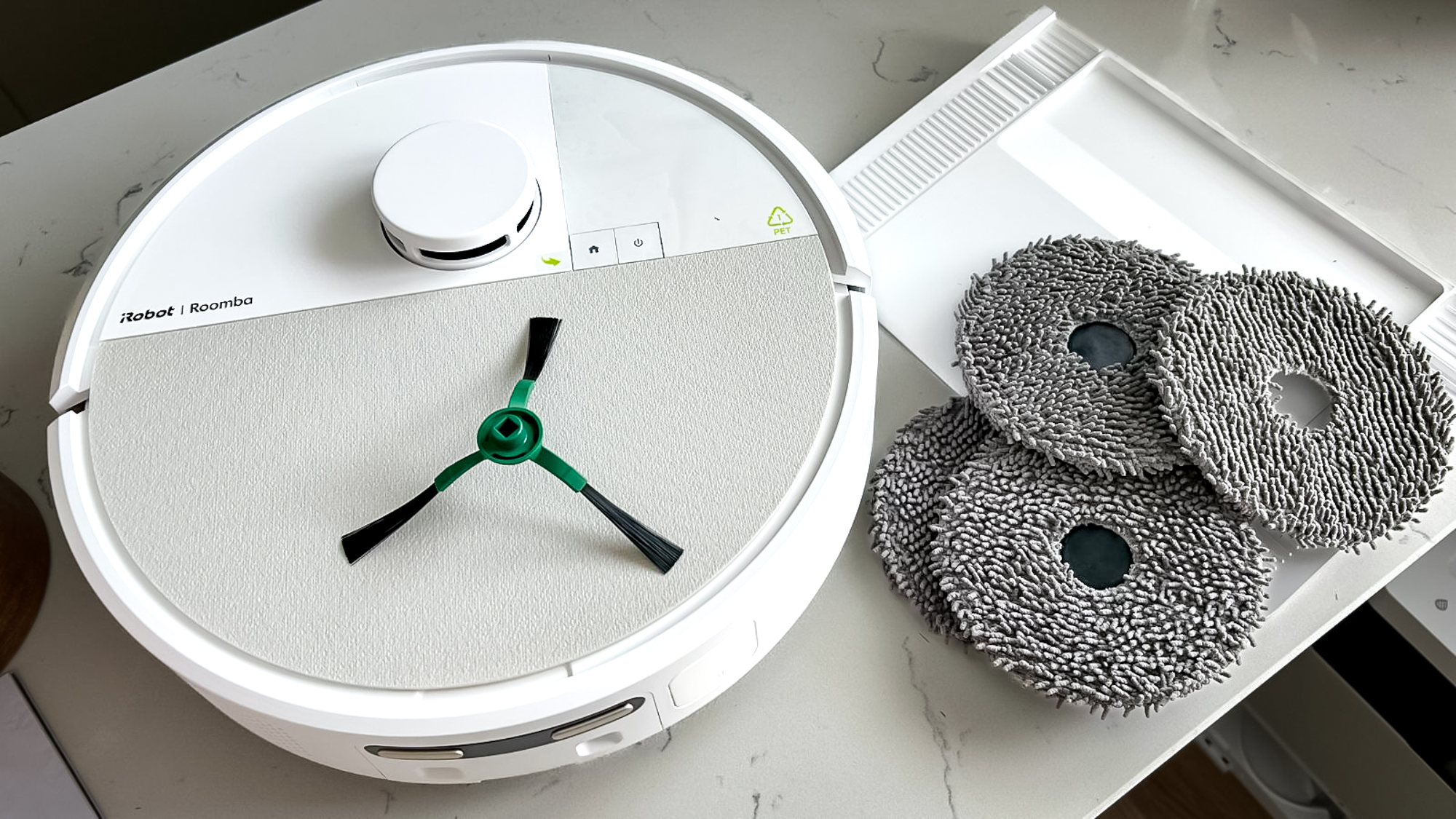
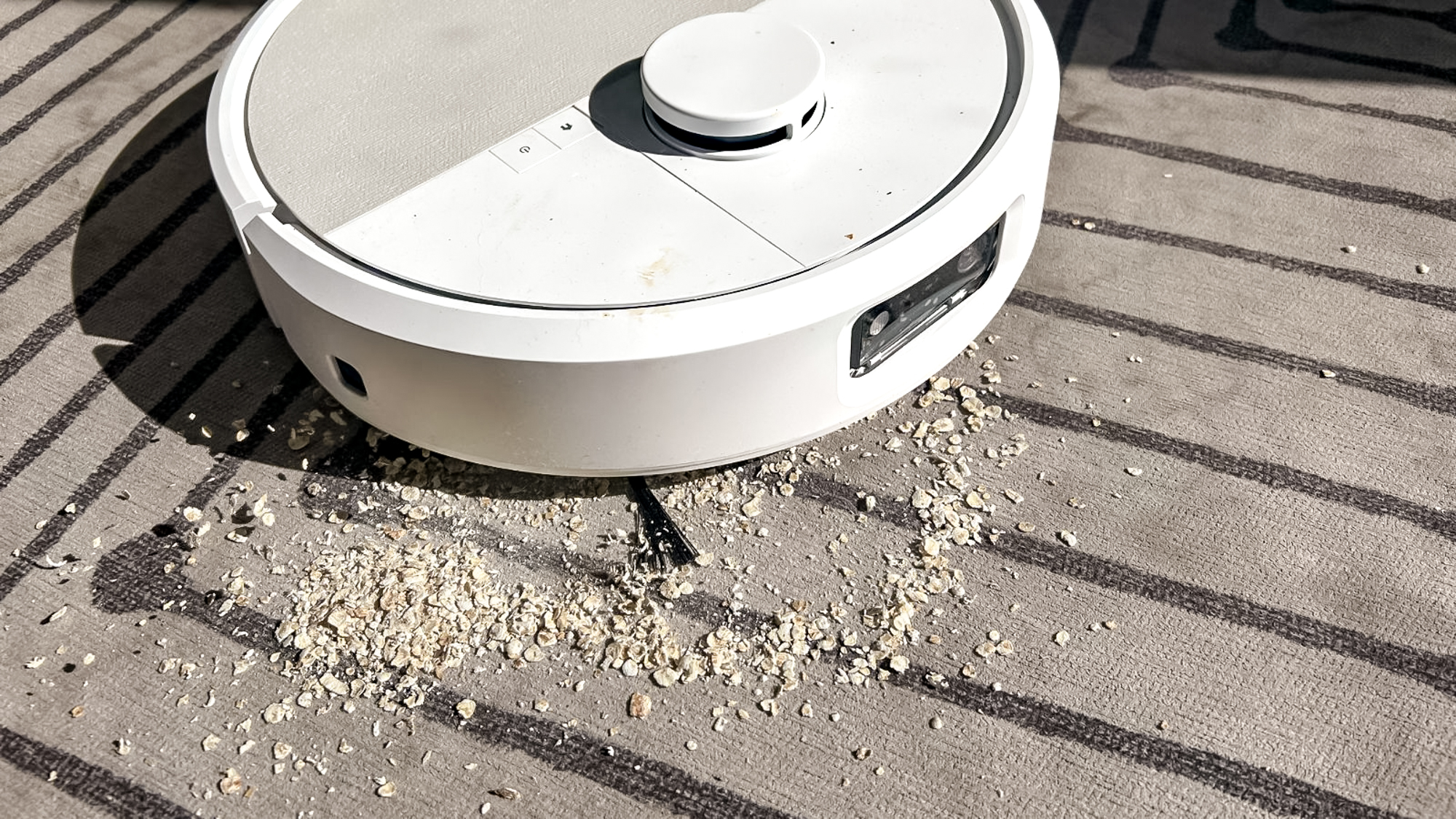
Specifications
Reasons to buy
Reasons to avoid
If you have a mixture of carpets and hard floors, why not opt for something that can handle it all? One of the newest models of the Roomba range, the Plus 505 Combo is an affordable, all-in-one vacuum and mop combo — and voted our overall winner.
Our tester, Annie, put this to good use in her busy family home that includes their shedding pug. After testing the Plus 505 Combo for a month, she was impressed at how thorough its pet hair pick-up was from carpets, hard floors and notably her low-pile rug that usually requires daily vacuuming from all the hair.
Perhaps what impressed her the most (besides her rug looking brand new), was that the Roomba Plus 505 automatically detects when it climbs onto rugs, adjusts its suction power and ‘auto lifts’ to accommodate different floor types. Plus, its specially designed brush doesn't get tangled in pet hair, which was a major gripe. Result!
Overall, the bot did a good job of tackling messes on her hard floors (particularly in corners), and managed to maneuver its way around doors and over thresholds without any problems. Plus, the mop was powerful enough for regular surface cleaning, dust removal, removing paw prints, and toddler spillages.
Setting up was straightforward, the app easy to connect, and it comes with useful features, such as AI PrecisionVision that ensures it doesn’t run over the rogue sock, cords, or worse still, pet poop. In fact, Annie made good use of the no-mopping zones, self-cleaning function, and drying mop pads, which were particularly handy in a household with kids and pets.
Perhaps the only downsides were that the app was glitchy at times, and the 'spot clean' mode wasn't as thorough at cleaning large debris as we had hoped. However, considering that the Roomba Plus 505 tackles pet hair and general dirt with ease (Annie didn’t find a single strand of dog hair), that’s really all you need from a winning robot vacuum.
- Read our full iRobot Roomba Plus 505 Combo review
Best budget vacuum cleaner for pet hair
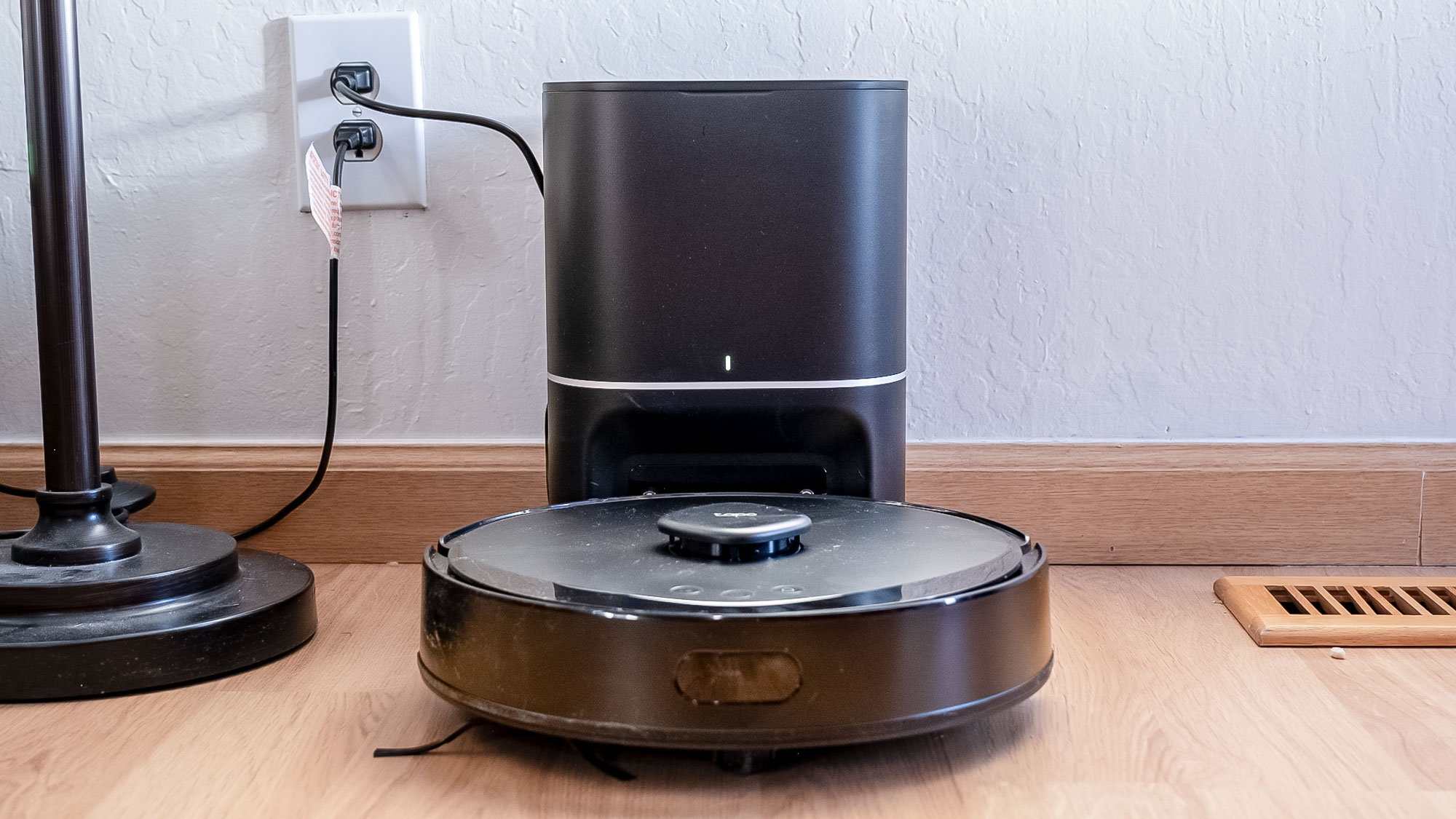
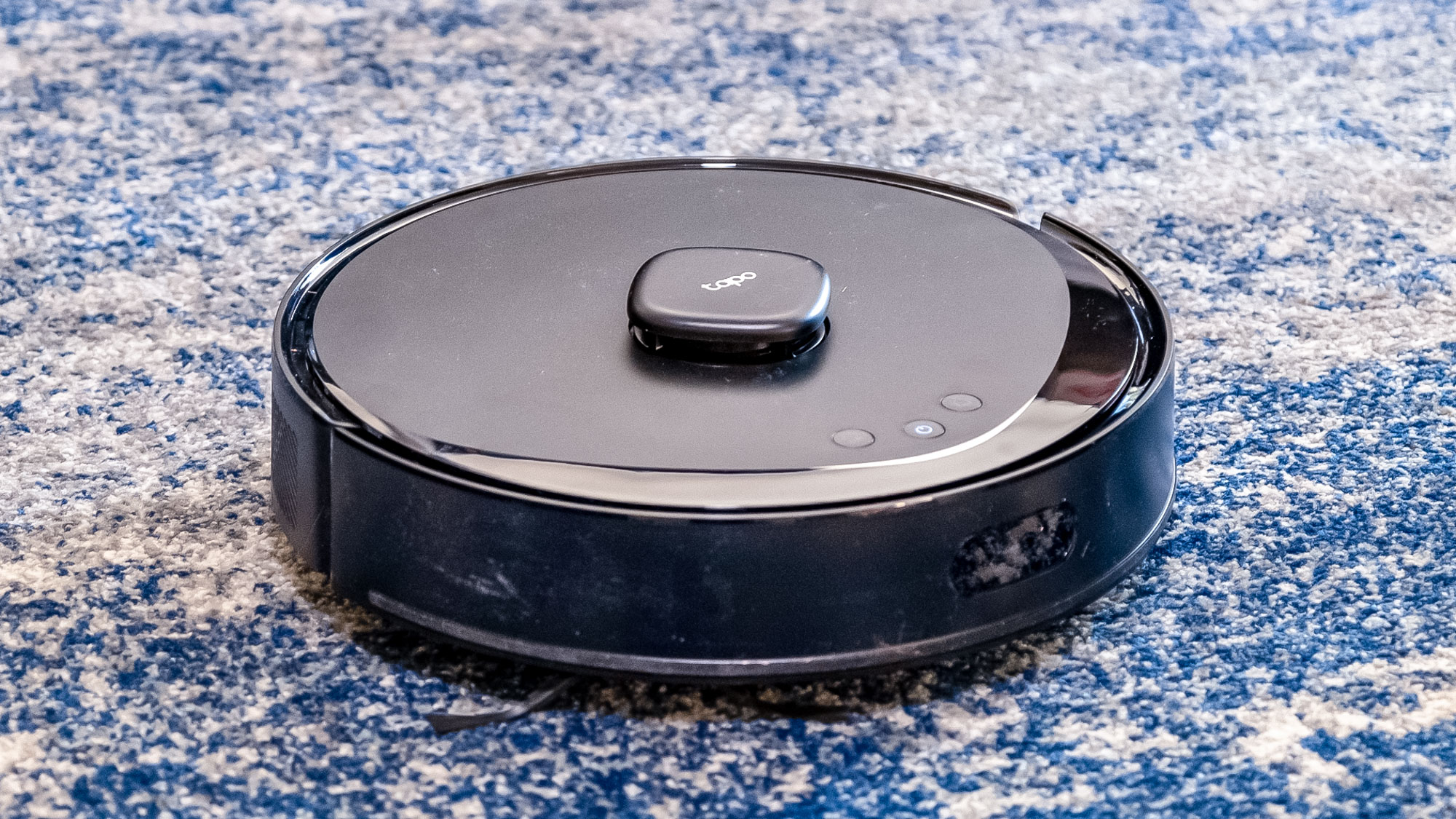
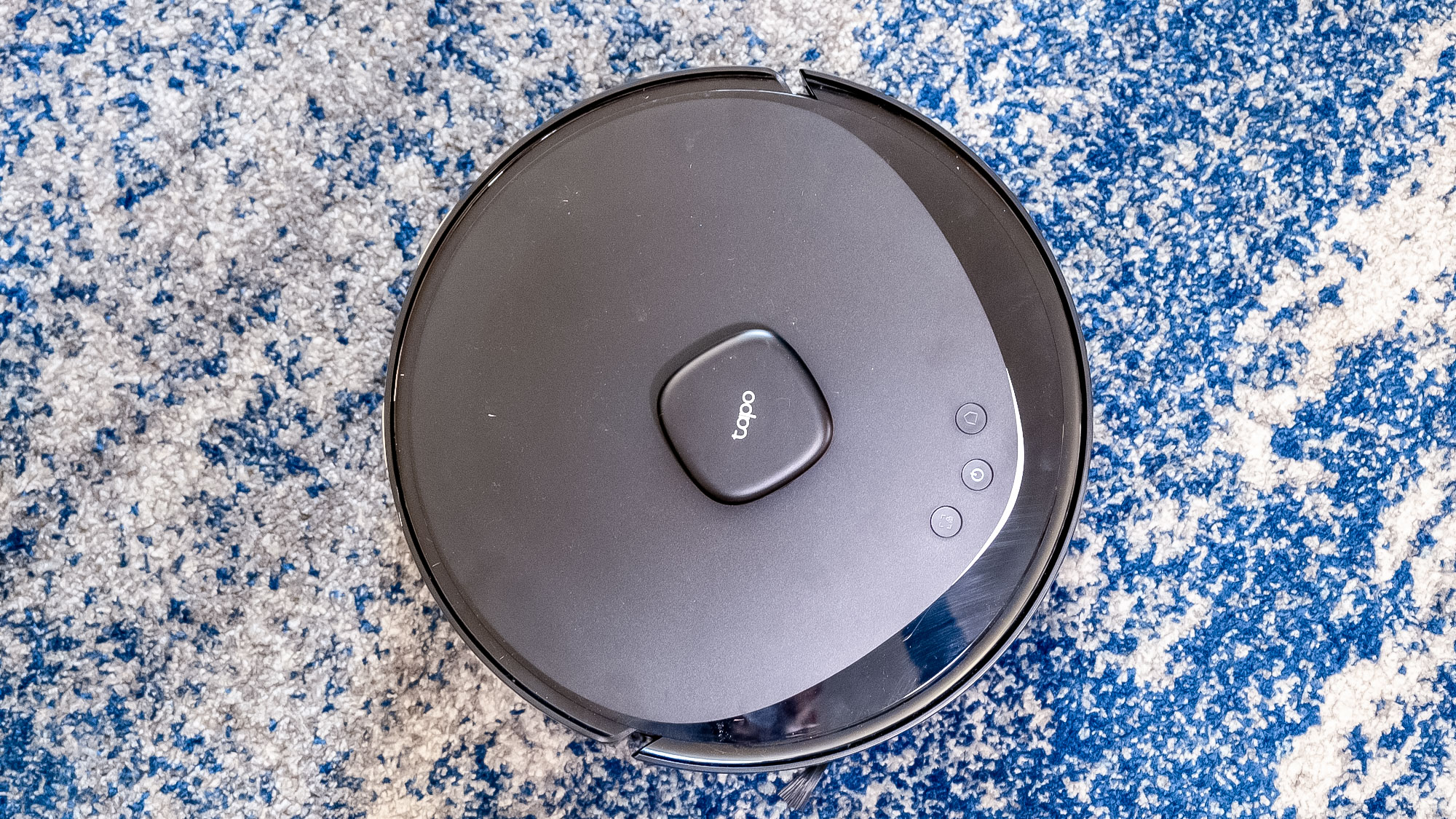
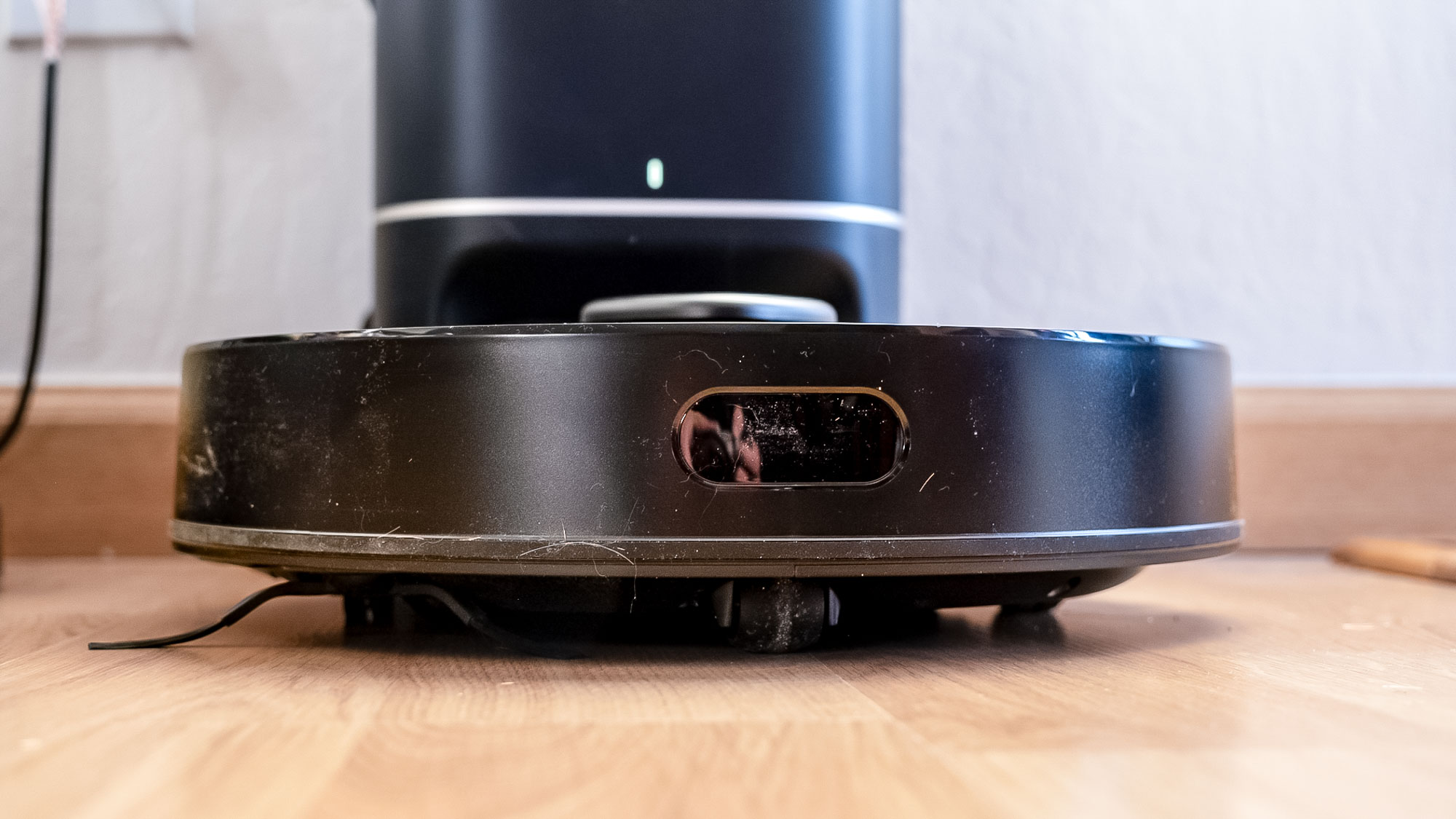
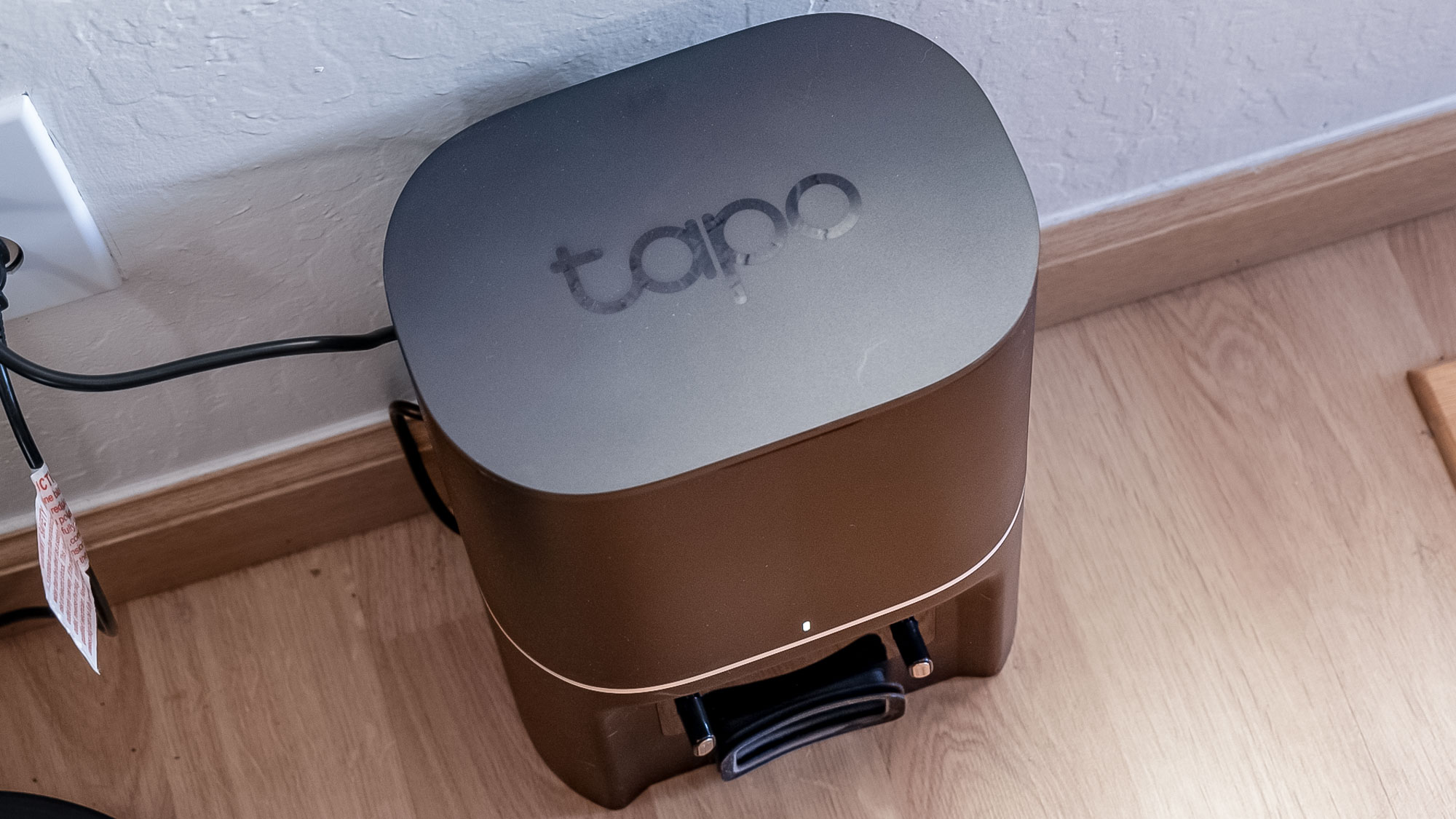
Specifications
Reasons to buy
Reasons to avoid
The RV30 Max Plus proves that you don’t have to spend a fortune on a decent robot vacuum. And if you're on a budget, we recommend the Tapo RV30 Max Plus as one of the best cheap robot vacuums you can get for around $200.
Our tester, Christian, put this to the test around his home and was instantly taken by its compact and ergonomic design. Despite its compact size, it performed well with basic cleaning, and excelled at sucking up cereal, pet hair and kitty litter on both carpet and hardwood floors.
Similarly, Christian was impressed by its mopping abilities, however don’t expect it to do a deep clean or remove tough, sticky stains. Still, it does a great job for basic clean-ups that won't be demanding.
What’s more, Christian thought the app is well designed and easy to navigate — which was a nice surprise, given that the Tapo app isn't just built for robotic vacuums, but all of the TP-Link Tapo smart home devices.
Perhaps the only disappointment was it struggled with large amounts of hair on carpet (given the lower 5300 pa, that's to be expected). In which case, the Shark would be ideal if you have mainly carpets. However, for a robot vacuum in its price range, this is an excellent budget option for daily use.
Read our full TP-Link Tapo RV30 Max Plus review
Best for carpets

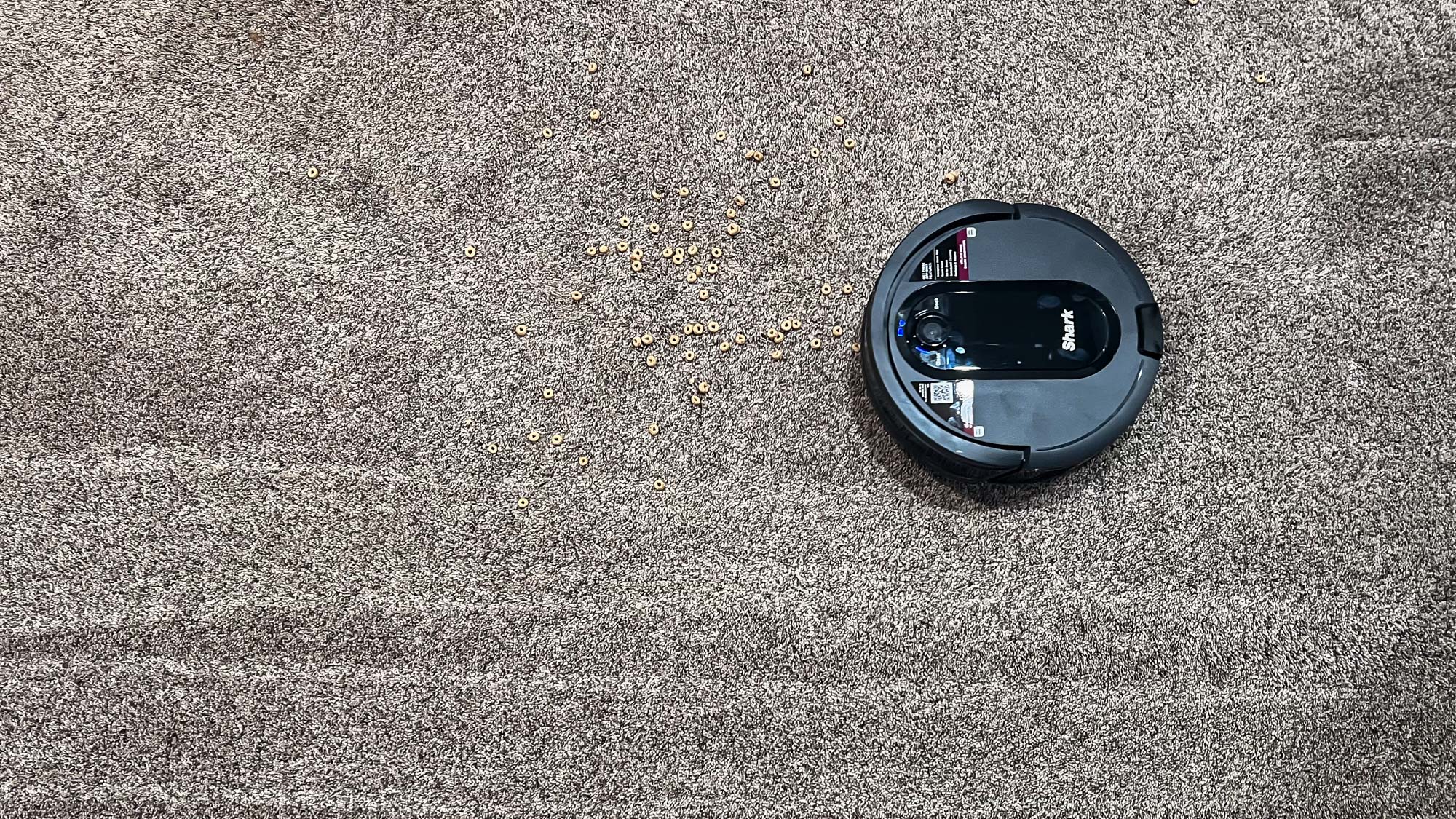

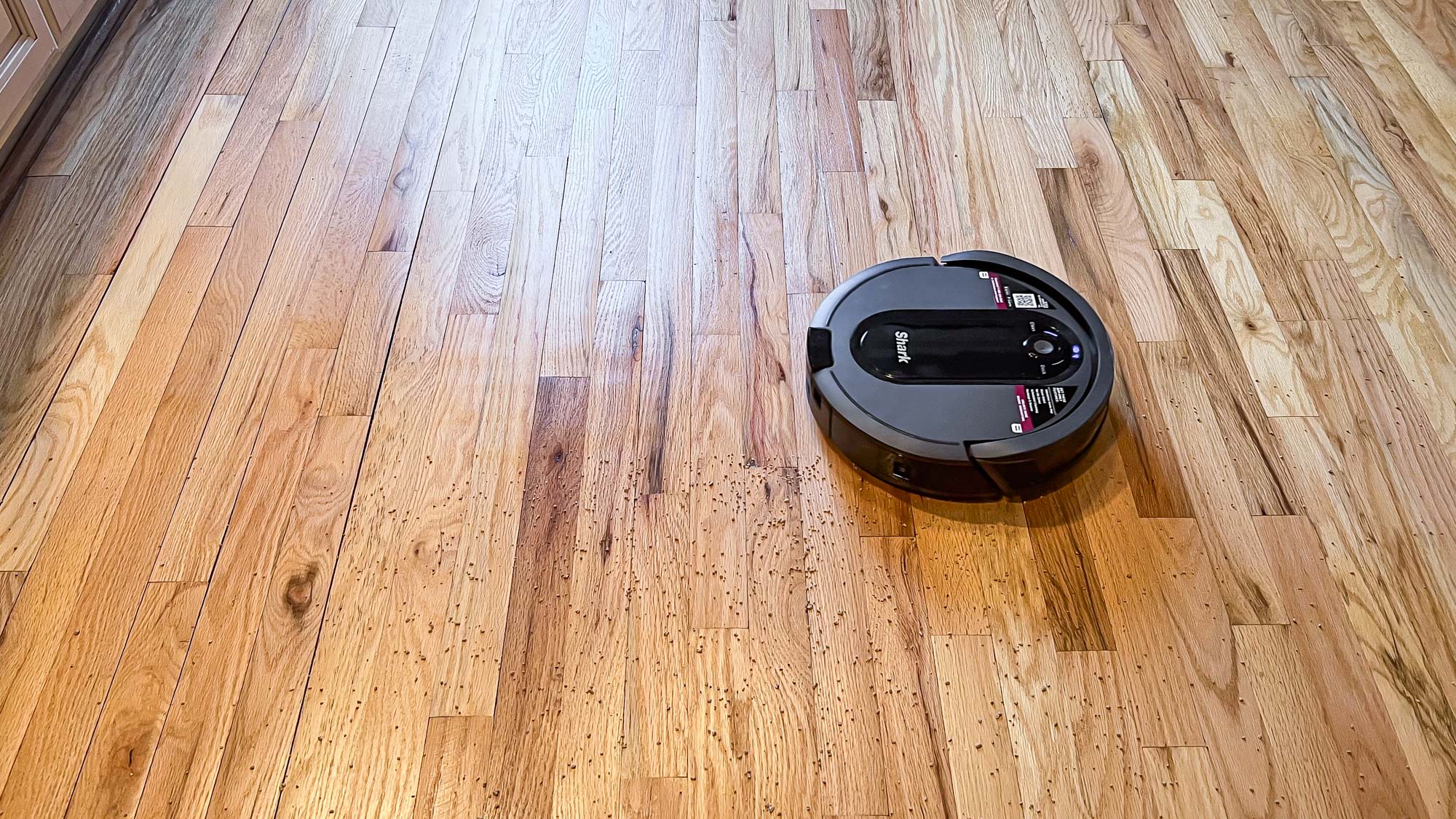
Specifications
Reasons to buy
Reasons to avoid
Pet hair is arguably one of the toughest types of debris to remove from carpets. And if you have plush carpets, there's nothing worse than seeing stubborn hair cling to the fibers after vacuuming. Out of the robot vacs on this list, we recommend the Shark IQ as the best option for removing pet hair on thick carpets.
Hunter put it through its paces around the home and was impressed by its power to quickly suck up hair and debris from thick shag carpet. While the longer fibers and rough texture didn't seem much of a challenge, neither was the task of picking up kitty litter and crushed cereal. Win-win! Similarly, its performance on hardwood was even more impressive, removing virtually all traces of pet fur and making quick work of messes.
Setting up was also a breeze, and we particularly liked the Shark IQ's low-profile size (3.35 inches tall) that easily fits under furniture and crevices. If you don't want to connect up to your Wi-Fi, you can manually press the "Clean" button on the vacuum's body to kick off a session and press the "Dock" to send the Shark back to its base.
Hunter felt the navigation was on point, and rather than move around in random patterns, the Shark IQ goes back and forth in a grid-like pattern that effectively picks up the smallest of debris. He also thought the App was straightforward to use, and allows you to easily set your schedules, and has accurate room mapping.
The only caveats are it lacks multi-floor mapping (which is fine if you only have one level to clean), and the base can be pretty loud when emptying the debris. However, he was sold by its sheer power to remove fur on both hardwood and carpet, and its self-emptying base that can hold dirt for up to 45 days, which isn't bad for its reasonable price tag.
- Read our full Shark IQ review
Best vacuum and mop for pet hair



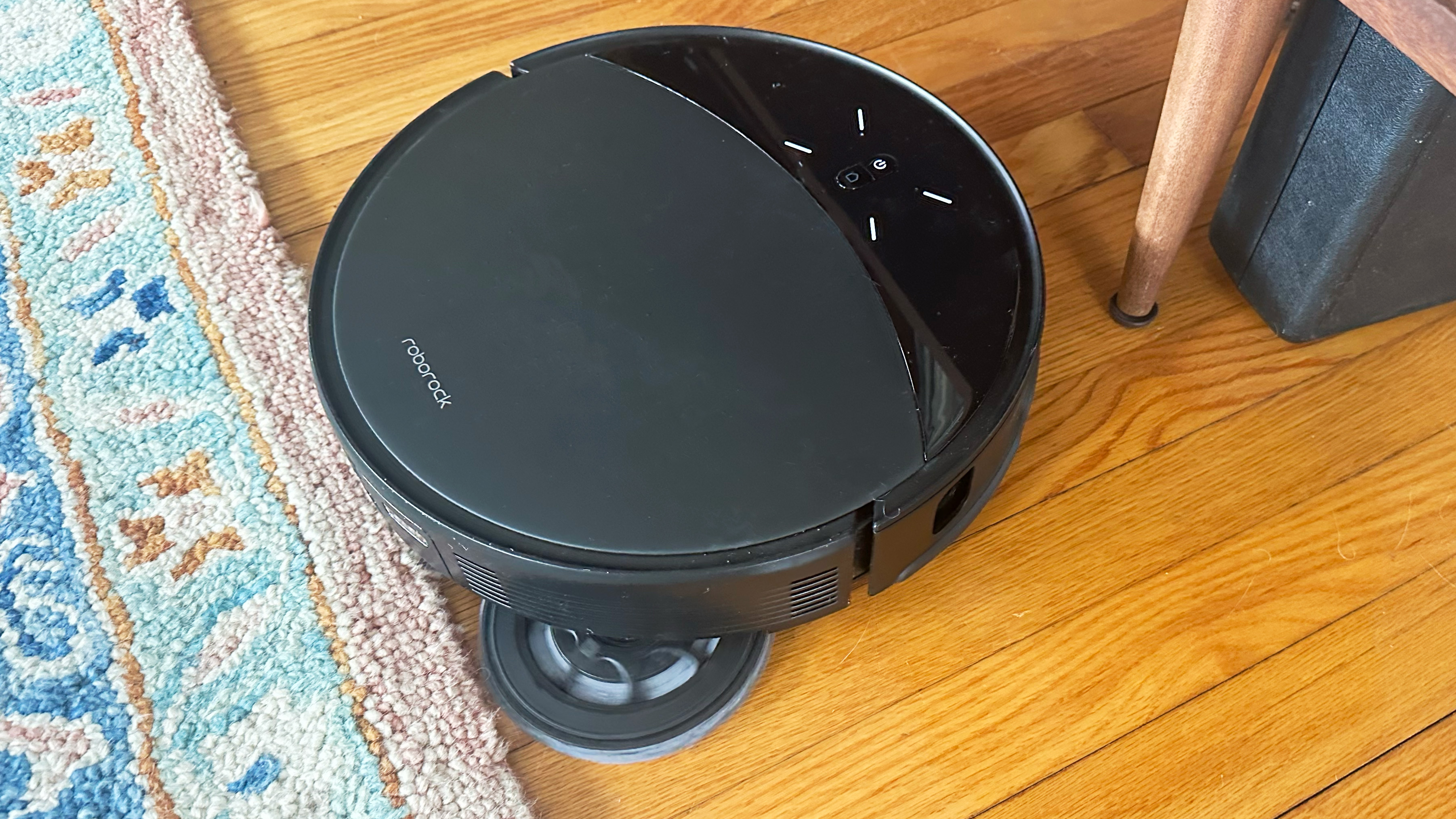
Specifications
Reasons to buy
Reasons to avoid
In a market full of high-spec, robot vacuum mop hybrids (we've seen them all), not all prove worthy of being the best for pet hair — but the Roborock Saros 10R is our exception.
Our U.S. Editor-in-Chief, Mike Prospero, let it loose in his household for a few months to see how it fared picking up after his dog and two cats. He was impressed by its superior cleaning performance, scoring it a high 100% for picking up both stubborn hair and kitty litter on hardwood, carpet, and even a tasseled rug.
In addition, Mike liked its extendable, sweeper brush that got deep into corners, and edges, as well as the way it seamlessly lifted itself over thresholds, from room to room. Besides its suction power and robust mopping system, the Saros 10R is one of the smartest and most thorough robot vacuums we've tested.
Packed with smart features and an impressive app, we particularly liked the robot’s vision system and AI that recognized and navigated around various obstacles, including Mike's TV stand, couch and pet bowls, before it steered clear of them.
Perhaps one of Mike's favorite features is the option to turn on the camera to take photos of your pets — why wouldn’t you? Better still, we loved its attractive, low-profile design, with a sleek mirrored surface — bear in mind that it might attract stray pet fur, especially if you have a curious cat.
Note, this is one of the more pricier robot vacuums we've tested in this guide. However, if you do want a powerful yet user-friendly robot mop that has all the bells and whistles, the Saros 10R would be a worthwhile investment.
- Read our full Roborock Saros 10 review
Best hard floor robot vacuum for pet hair
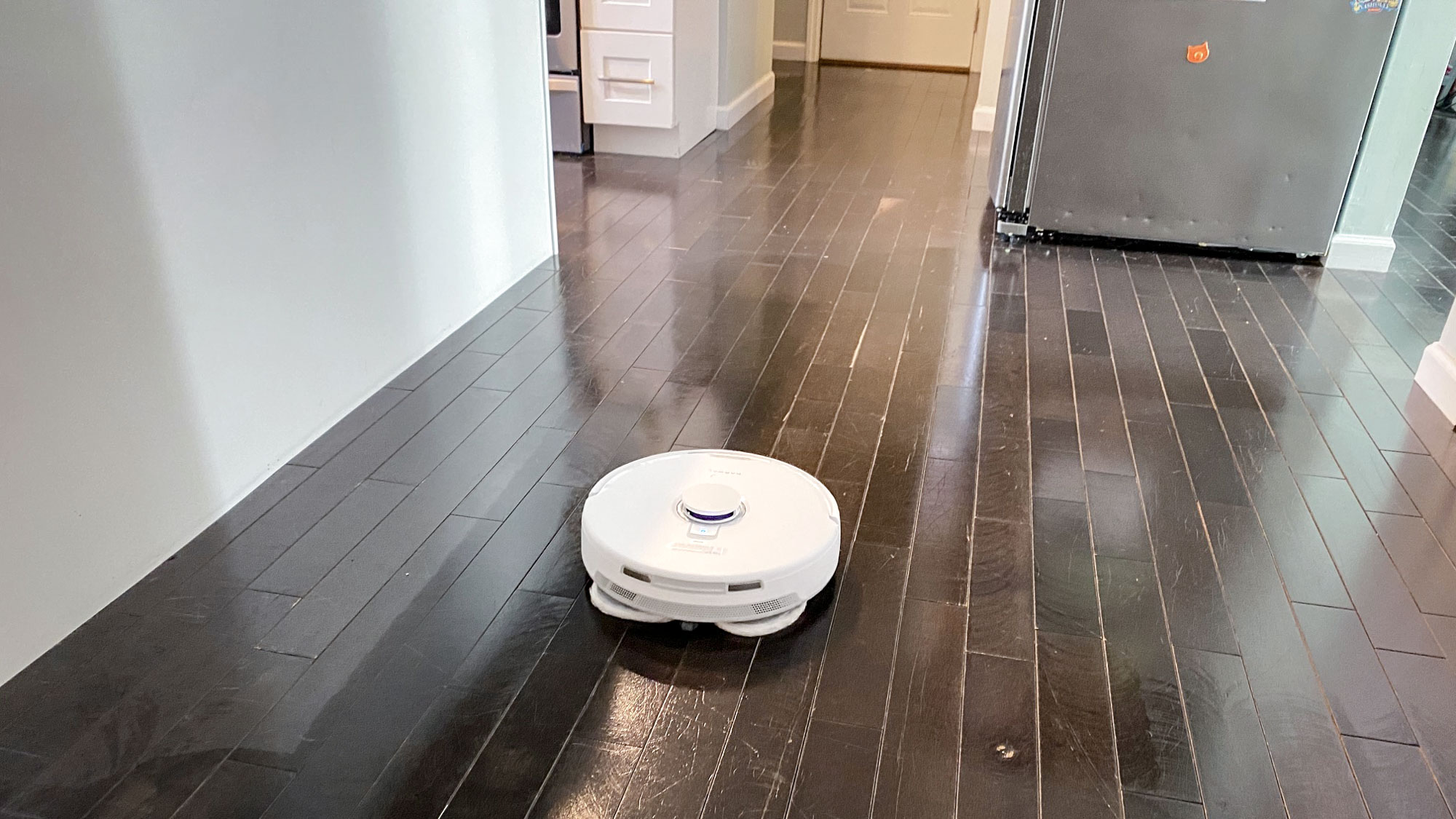
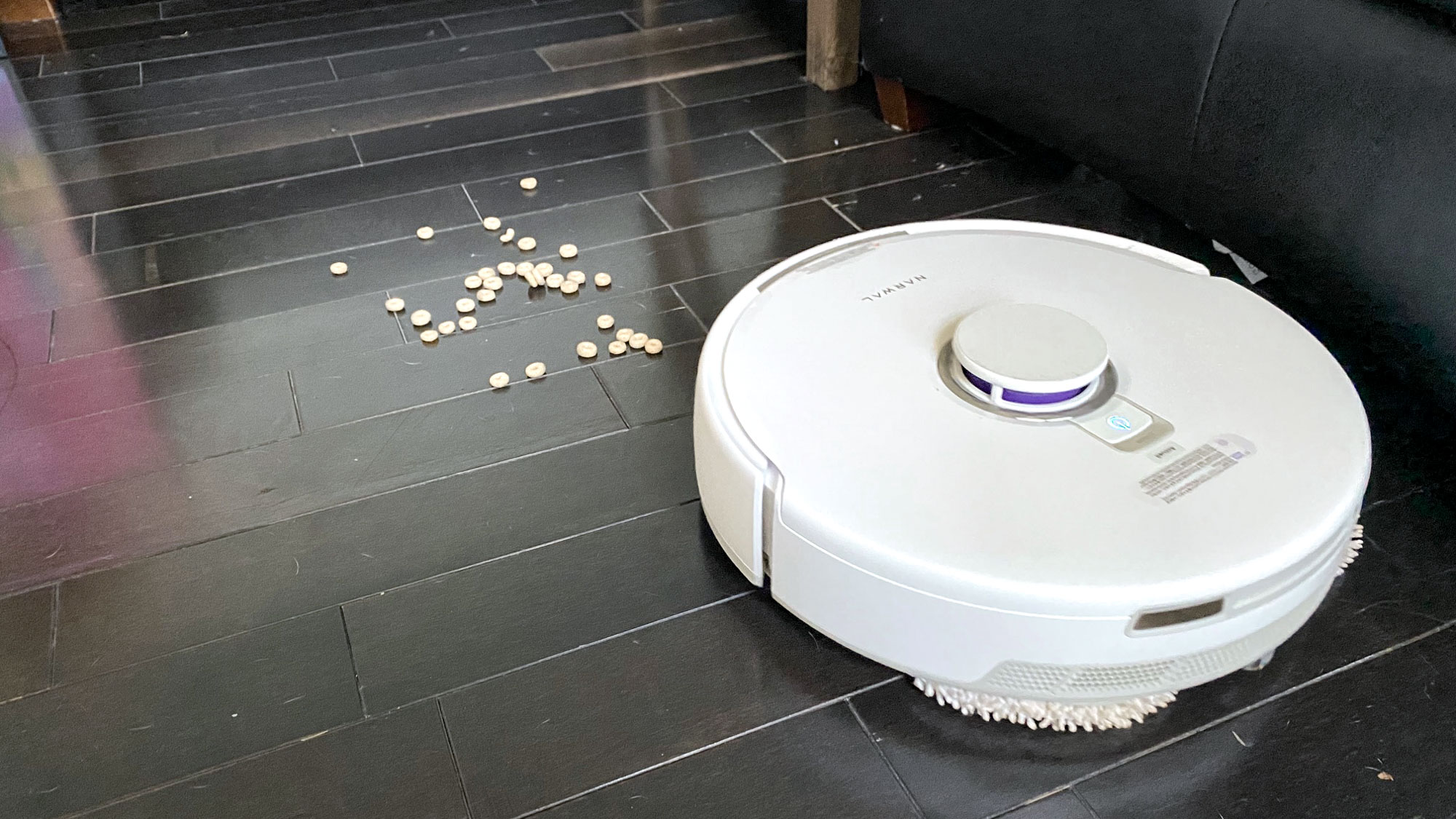
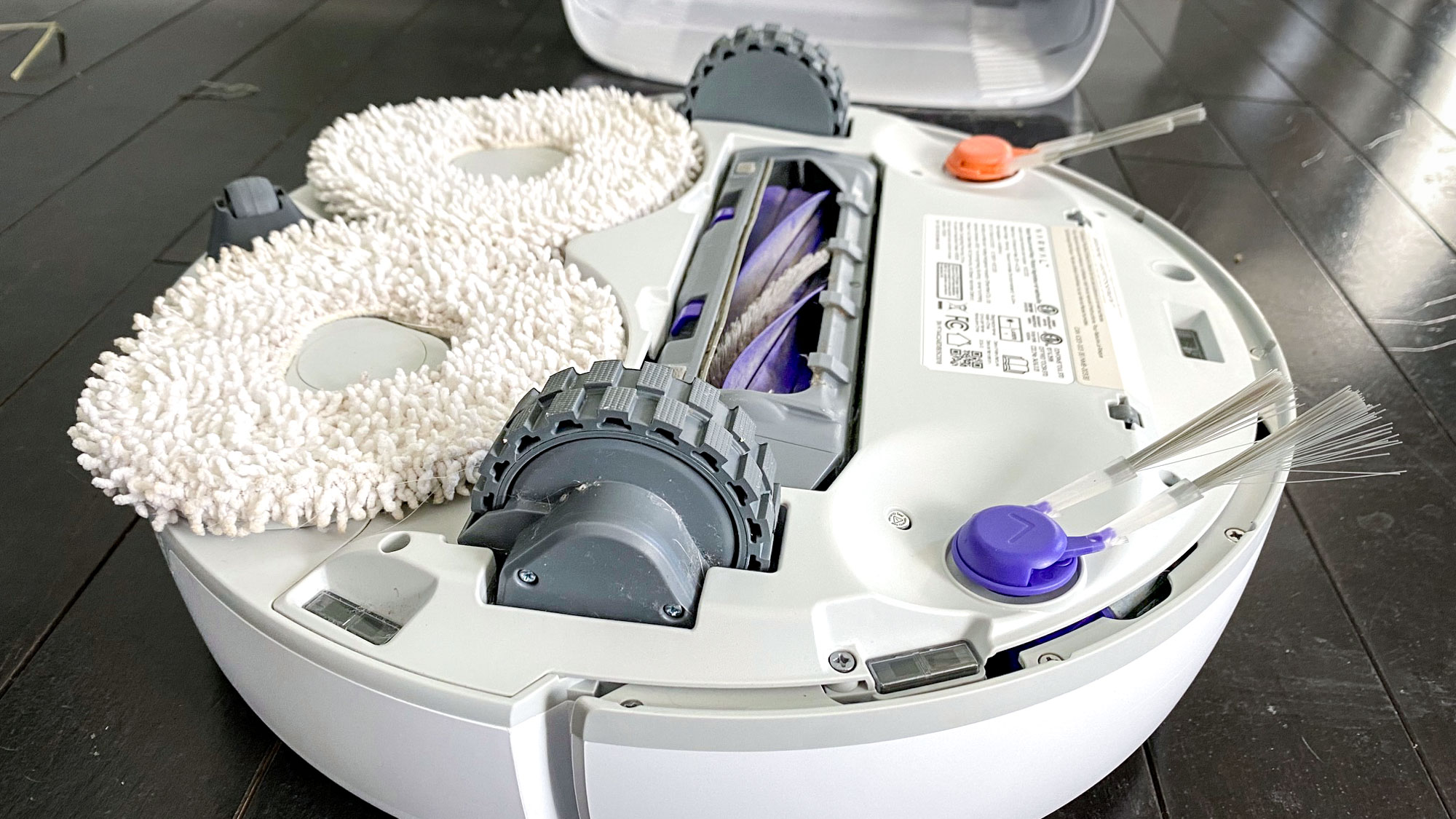
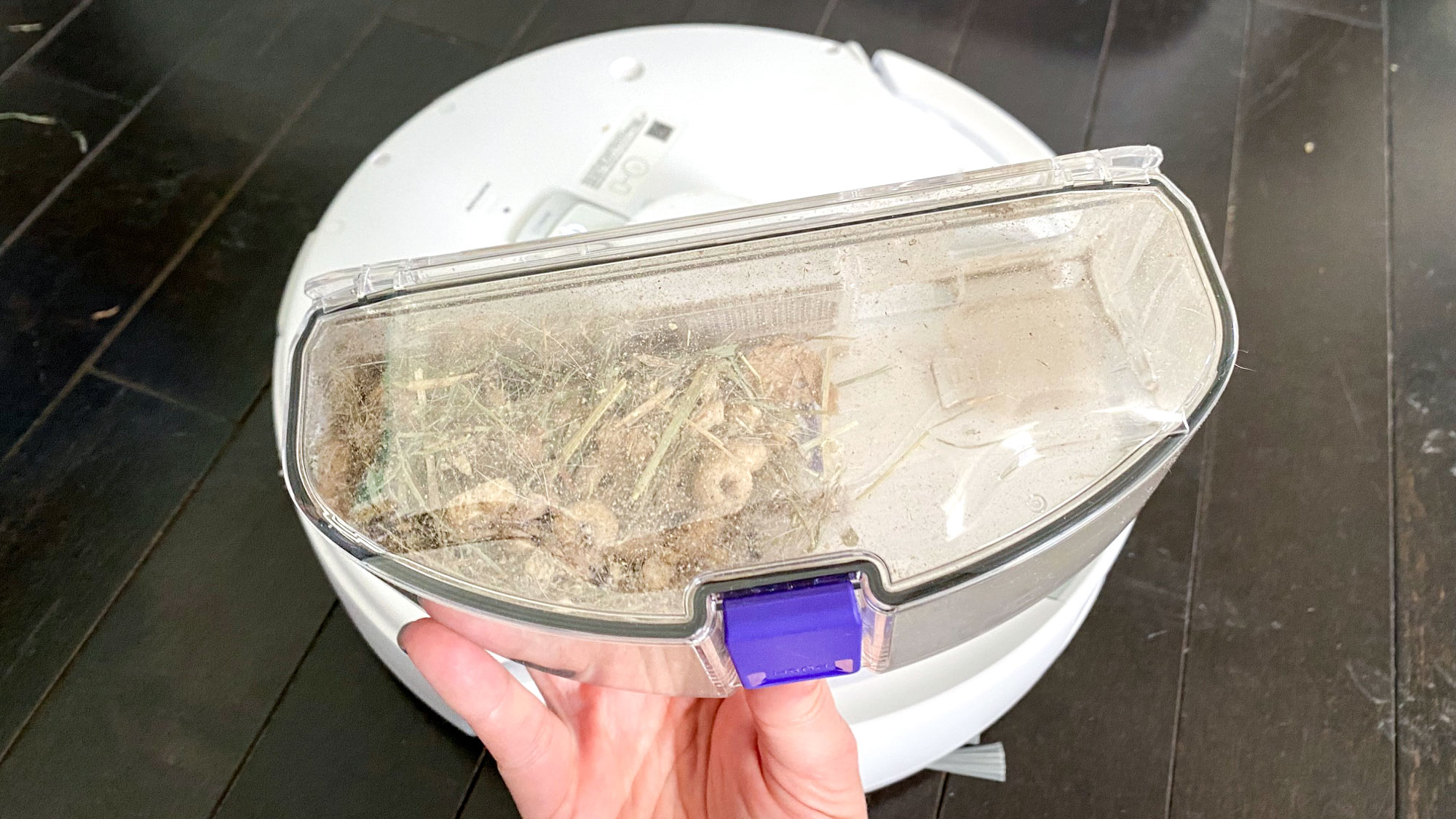
Specifications
Reasons to buy
Reasons to avoid
Hard floors are notoriously tricky to keep spotless and hair-free (especially if you have multiple pets), but the Narwal Freo Pro is a great fur-busting option.
Our reviewer, Catherine, tested this around her home which includes two short-haired dogs (and long-haired humans). After months of testing, the Freo Pro was a "true pro" at picking up stray hair, debris, kitty litter, and even random 'kid' things like glitter from hard floors (every parent's nightmare!).
What's more, the brushrolls remained tangle and clog-free during testing, which is always a huge bonus. This is thanks to its DualFlow Tangle-Free System that traps hair using the side brushes before transferring it to the main roller brush.
However, it did struggle to completely remove larger debris caught in transition areas between hardwood floors and rugs. In any case, the mop cycle did a splendid job at removing dog hair, muddy paw prints, dried drool, and more.
Additionally, maintenance is simple, with its self-emptying and cleaning functions. The water tanks are emptied after the machine completes a mopping cycle.
Perhaps the only downside is that she found the Freo Pro slightly confusing to set up. However, once it had managed to map all the rooms and set cleaning zones, it took Catherine less than 10 minutes to vacuum each room, which was quicker than expected.
If you want a powerful yet affordable machine that can easily handle everyday messes, the Narwal Freo Pro is well worth considering.
- Read our full Narwal Freo Pro review
Also tested
Although we put plenty of robot vacuums designed for pet hair through extensive testing, not every model made the final selection, despite a great performance.
However, if you're still looking for an alternative to suit your needs or budget, check out our other options below.
The Q7 M5 proved to be a great, budget-friendly robot and mop vacuum to deliver impressive results in general cleaning. But for all its upsides, it struggled with pet hair. If you don't mind occasionally untangling the brush, this is an extremely affordable option.
Read our full Roborock Q7 M5 review
The Deebot X8 Pro Omni is an impressive robot vacuum and mop, that gave a first-class cleaning performance on carpet and hard floors. The only disappointment was its pet hair pick up wasn't as thorough. However, you'll love the convenience and all the mod-cons.
Read our full Ecovacs Deebot X8 Pro Omni review
This hybrid vacuum and mop comes with five powerful cleaning modes to target hidden debris, and stuck-on stains. In our tests, it vacuumed up 95% pet hair on hardwood and 90% on carpets. The only downside was it struggled with loose debris on longer carpet. However, it did a decent job mopping our floors, and even cleans itself.
Read our full Shark PowerDetect 2-in-1 review
The Roomba j7+ features object recognition and learns from what it encounters. That means you don’t need to worry about pet poop collisions. However, it didn't fare as well as others when picking up pet hair on carpets.
Read our full iRobot Roomba j7+ review
The Dyson 360 Vis Nav almost has it all: excellent edge cleaning, great obstacle detection and a great design. Plus it's packed with all sorts of features, such as disc brakes and a remote electronic lock. However, it doesn't cope well with large amounts of pet hair, which is major disappointment, considering its price tag.
Read our full Dyson 360 Vis Nav review
How we test the best robot vacuums for pet hair
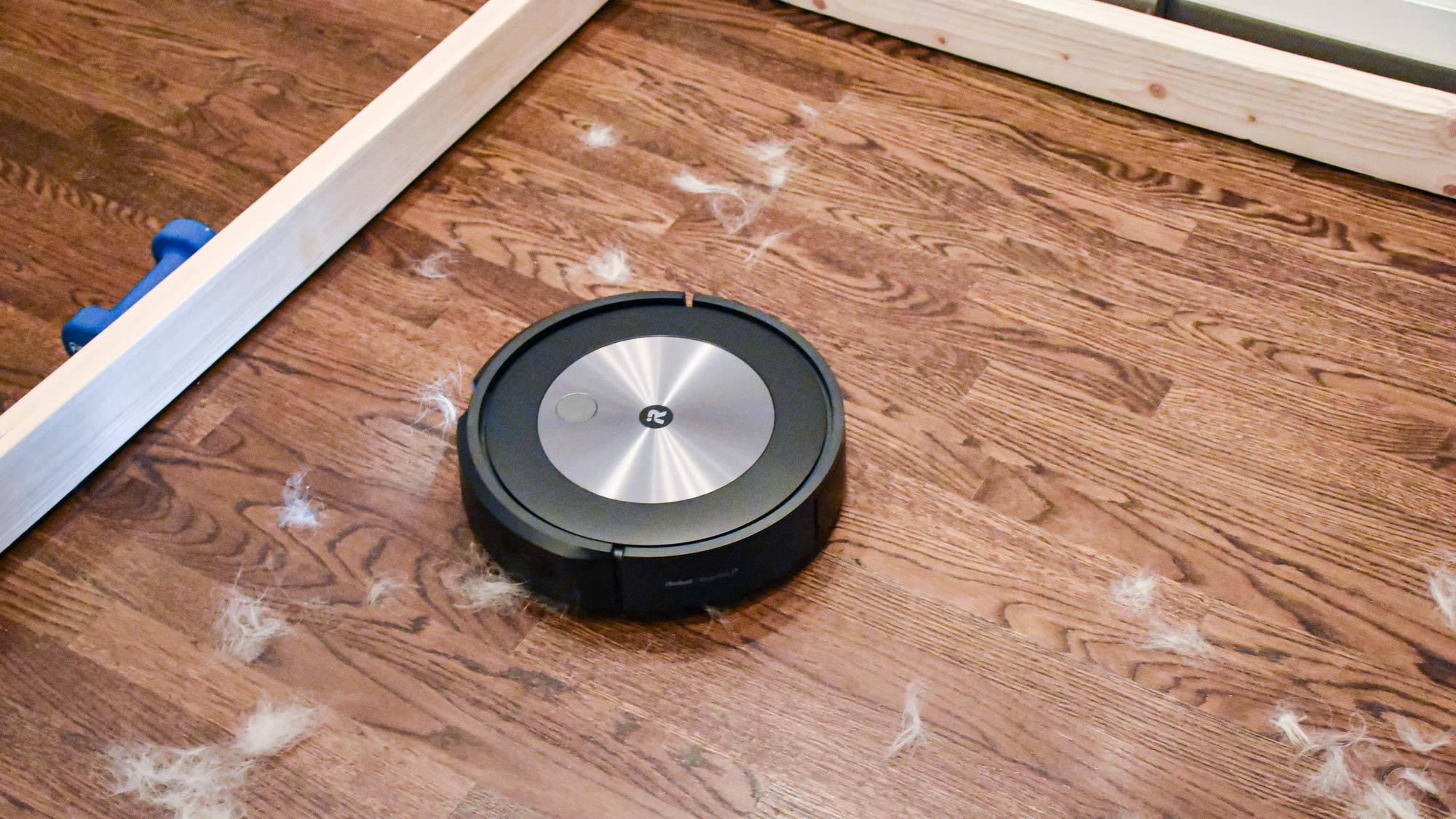
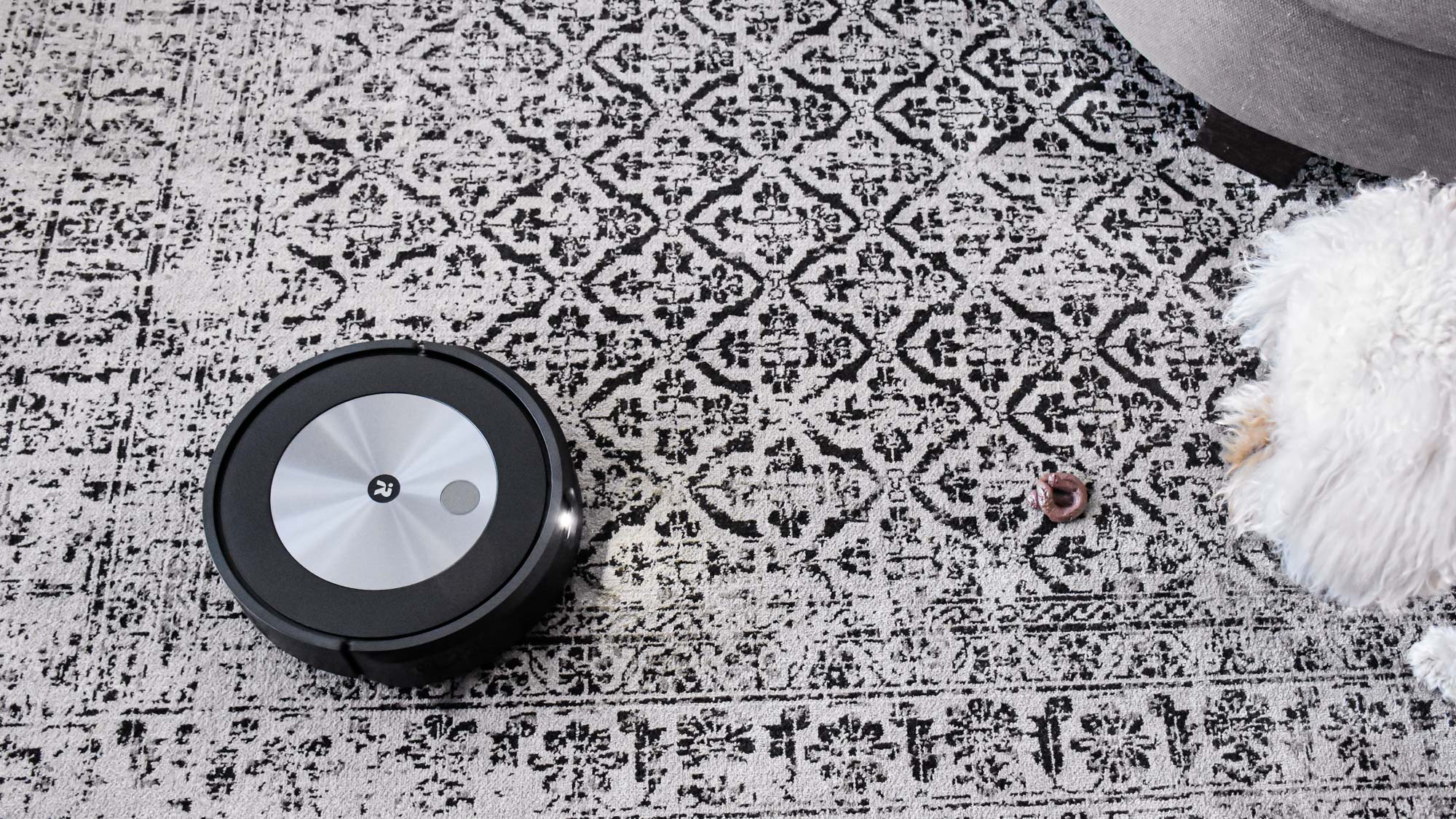

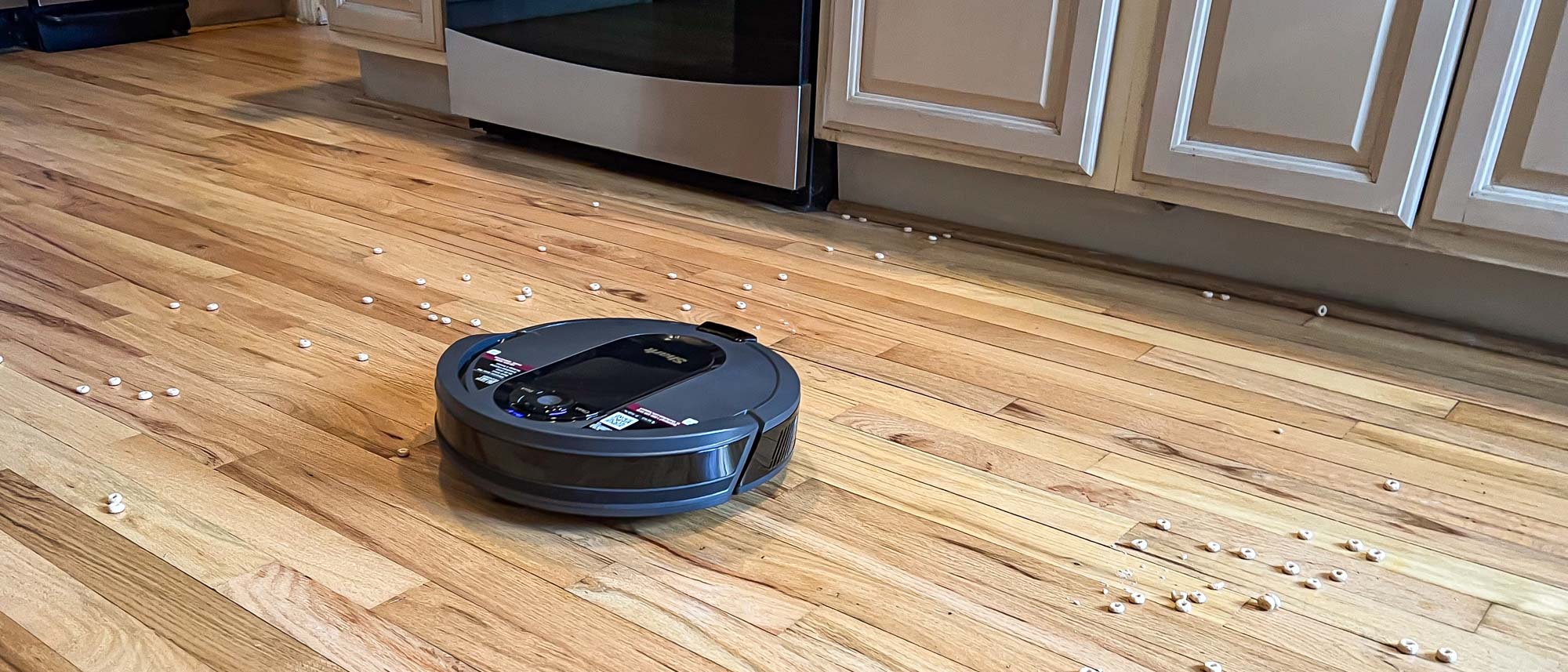

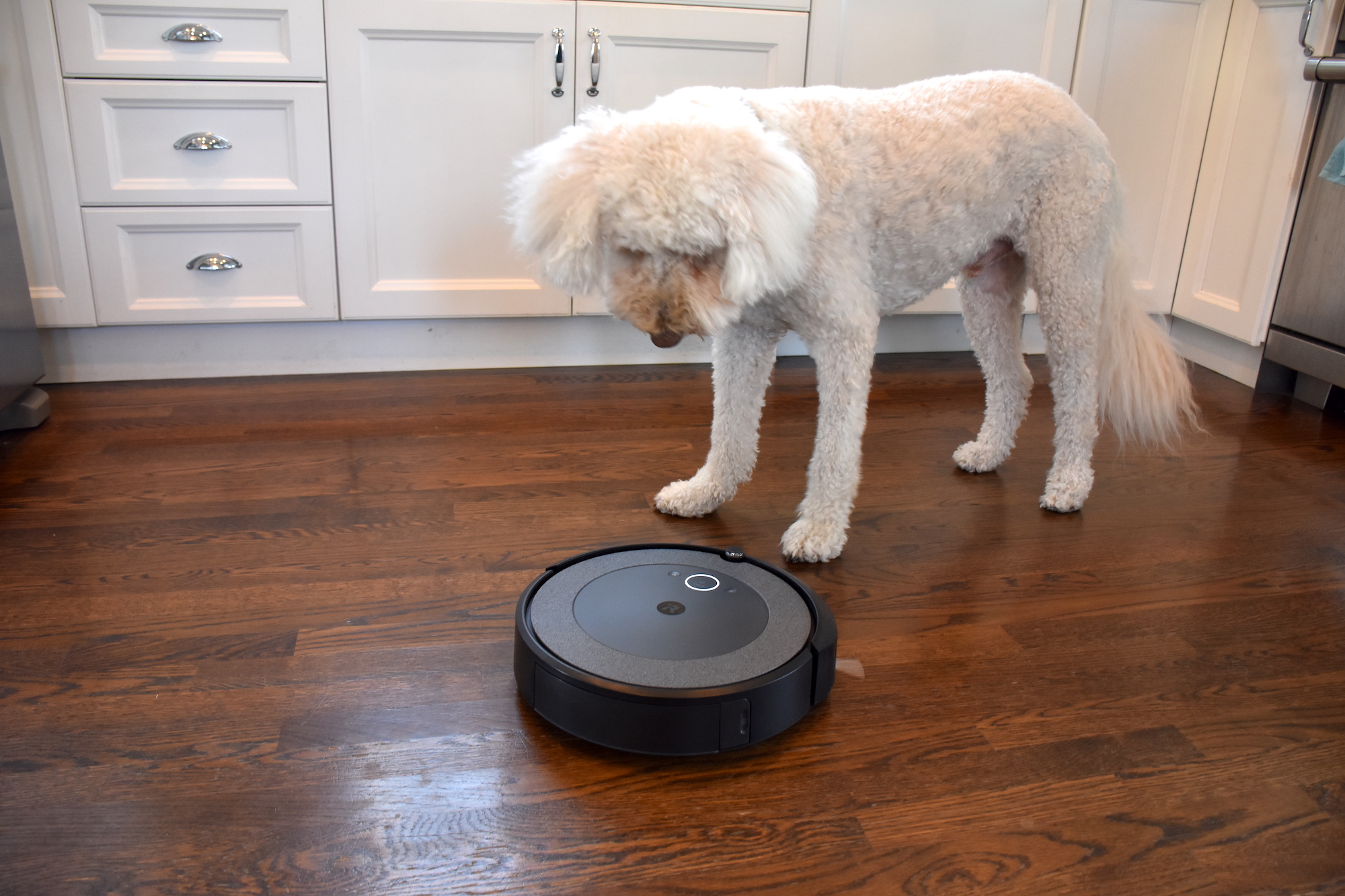
We spent hundreds of hours putting a variety of robot vacuums through first-hand testing in both lab and real-world settings.
In our lab testing, we replicated common household flooring surfaces and debris by sprinkling an area of flooring with about 20 grams each of pet hair on both hardwood and low-pile carpet.
We then ran the robot vacuum in a specified 5 x 5 ft area, to measure how effective each vacuum is at picking up dog hair (primarily sourced from an English Cream Golden Retriever), 20 grams of kitty litter, and 20 grams of Cheerios cereal.
In evaluating the best robot vacuums for pet hair, we chose them based on their scores in our pet hair pick up lab tests, kitty little or cereal and tufts of pet hair on each. Additionally, we evaluated user experience, ease of setup, and smart features including ability to avoid objects, ease of emptying, noise level and overall value.

While real-world testing isn’t as rigid as our lab tests, it is primarily based on user experience in real homes — and with real pets! Similarly, we narrowed down our top performers based on extensive criteria.
For instance, how powerful is it to get rid of pet hair and dander on different floor surfaces? Is it able to cross thresholds well? Does it navigate and avoid obstacles well? Is it easy to set up, and connect to the app?
These are just some of the questions our team of reviewers answers when evaluating each robot vacuum and determining which is the best model for pet parents.
How to choose your best robot vacuum for pet hair
Before buying a robot vacuum for you and your pets, there are a few factors to consider. How many pets are in your home and how much are they actually shedding? Is it long-haired or short fur and are they shedding on a regular basis?
Secondly, what type of floors do you have around the home? If you have mainly hard floors, having one of the best robot vacuum and mop hybrid models would be essential for both pick-up power and scrubbing pet messes or any other stains on floors. Plus, choose a robot vacuum that is user-friendly, and easy to operate.
In any case, here are the top features you should be looking for when buying a robot vacuum for pet hair.
- Suction
It's important to consider suction power, as this will determine how thorough your cleaning results will be. Ideally, a model of 5,000 Pa range is adequate for pet hair. While more advanced models like the Roborock Saros 10R has 22,000 Pa suction. - Specialized brush rolls
A good robot vacuum should be well equipped to handle plenty of hair. Look out for anti-tangle brush rolls to prevent any clogs or hair tangling. - Dust capacity
A smaller dustbin will need emptying more often, especially if you have multiple pets! Opt for models with large capacity dustbins to reduce the frequency of emptying out. - Self-emptying
You can find this feature on many premium models, and some can even hold up to 75 days worth of waste before needing emptying. Essentially, the robot vacuum will empty itself into a larger dustbin in the charging base once it’s full, saving you the trips to the trash can. If undecided, check out our guide on whether robot vacuums with self-emptying bases are worth it. - Smart features
Some of the most common features you'll need are mapping, scheduling, no-go zones, target rooms, and multiple floors. You can also find advanced models that come with an extendable sweeper arm, a flexi-lift chassis, or built-in cameras, should you wish to spy on your pets when you're not home. But don't be swayed by things you won't use; you'll save money by being focused. - Battery life
Another factor to consider is the battery life, especially if you'll be using it on a daily basis. If that's the case, it's worth buying a robo vac that comes with a base, so it can charge itself between runs. This way it won't run out of charge mid- cleaning, and delay your session.
Robot vacuum FAQs
Is a robot vacuum worth it for pet hair?
Although regular vacuums can suck up surface dust, debris and hair, they may not be as effective in pet households, especially when dealing with heavy shedding. And while pet hair is easier to collect from hard floors because it can’t get embedded, it can still cause problems.
Specific robot vacuums are designed to handle these challenges by having specialized/tangle-free brush rolls or rubber bristles, that can easily lift and capture pet hair and dander more efficiently. Additionally, this will prevent any fur clogging the brush bar, which prevents the vacuum from picking up further debris.
What's more, you'll find more advanced filtration systems in pet vacuums, which is ideal for pet owners with allergies. So if you have a lot of fur to contend with from shedding friends, a robot vacuum for pet hair is a worthwhile investment.
How much should you spend on a robot vacuum?
While you need to find a robot vacuum which excels in this type of debris, that doesn’t necessarily mean you need to splurge on an expensive model.
Our top budget performer, the TP-Link Tapo RV30 Max Plus, costs less than $200, yet proved to do a grand job. Generally, a decent robot vacuum can start from about $150 up to a whopping $1,700, so it’s essential that you have a budget in mind before you start browsing.
The best thing is to identify exactly what your needs are, and don’t be tempted by expensive or smart features unless you intend to use them.
Get instant access to breaking news, the hottest reviews, great deals and helpful tips.

As the Homes Content Editor, Cynthia Lawrence covers all things homes, interior decorating, and garden-related. She has a wealth of editorial experience testing the latest, ‘must-have’ home appliances, writing buying guides and the handy ‘how to’ features.
Her work has been published in various titles including, T3, Top Ten Reviews, Ideal Home, Real Homes, Livingetc. and House Beautiful, amongst many.
With a rather unhealthy obsession for all things homes and interiors, she also has an interior design blog for style inspiration and savvy storage solutions (get rid of that clutter!). When she’s not testing cool products, she’ll be searching online for more decor ideas to spruce up her family home or looking for a great bargain!

